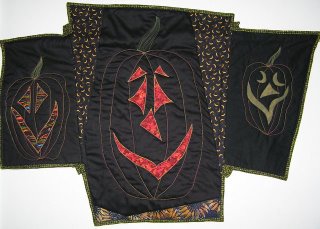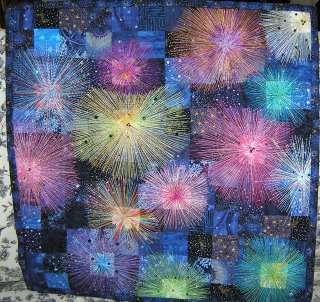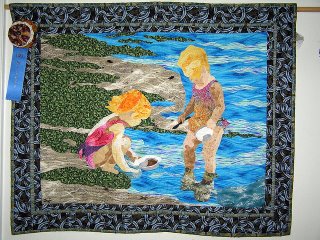 This was an experiment in trying new techniques.
This was an experiment in trying new techniques.Jack-o-Lanterns are quick and easy subjects!
Reverse Applique (Left & Middle Jacks)
1) The fabrics were layered : black on top, bright underneath(I only used 1 layer in this experiment, but you could use several layers), batting and backing.
2) Vague pattern was drawn on with chalk.
3) Sew around the shapes, and cut away the fabric until you get down to the layer you want to see.
4) Then zig-zag to secure the edges as for applique.
Soft-Scrub with Bleach Discharge (Right Jack)
I made a stencil out of contact paper and painted on the Soft Scrub. After 15 minutes, I rinsed it out. The light parts of the face is the same black fabric discharged of color. It doesn't look like much until you know the technique ...
After the general faces were done, I again chalked out the general outlines of the pumpkin shapes, and threadpained in the lines for the pumpkin and stems.




